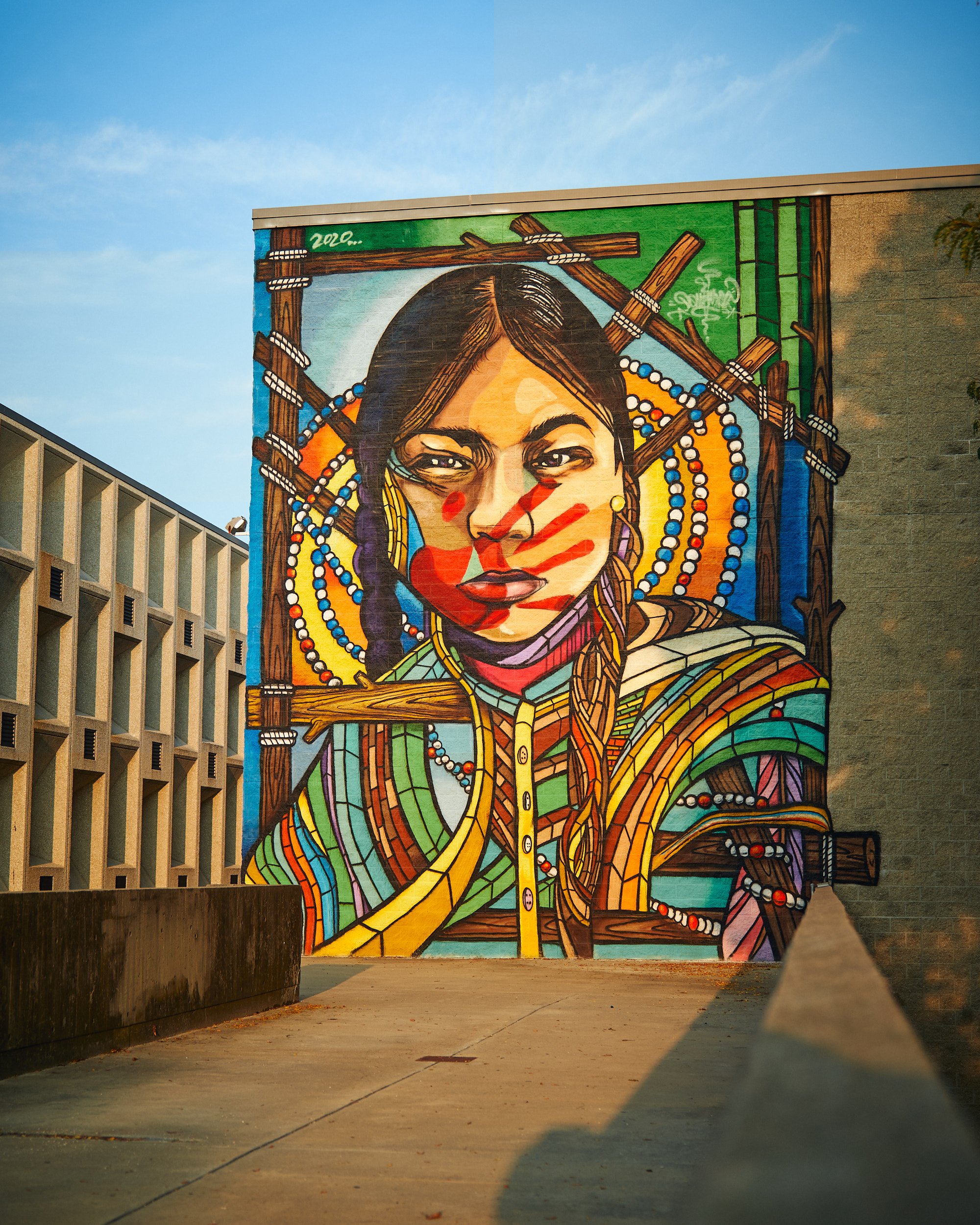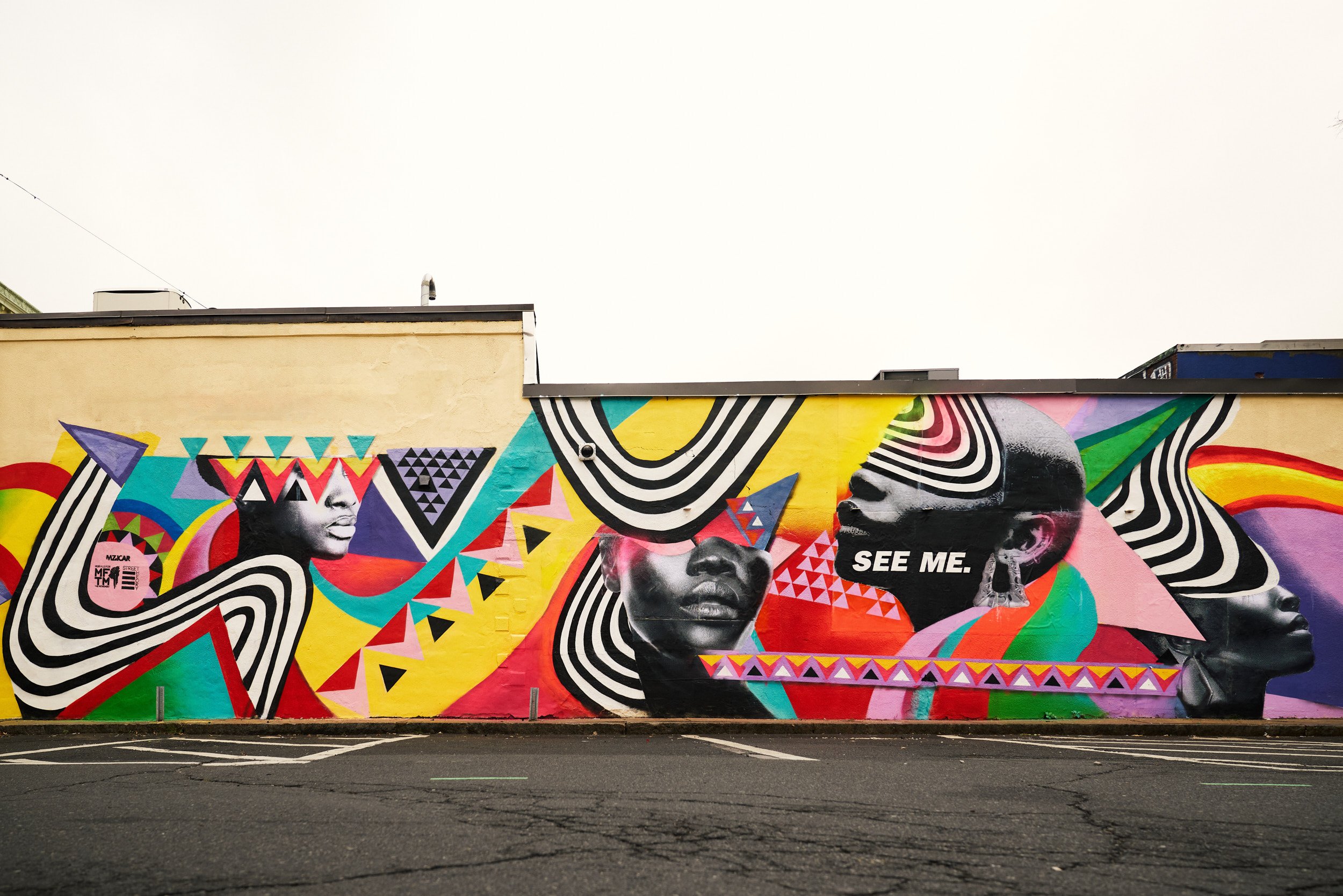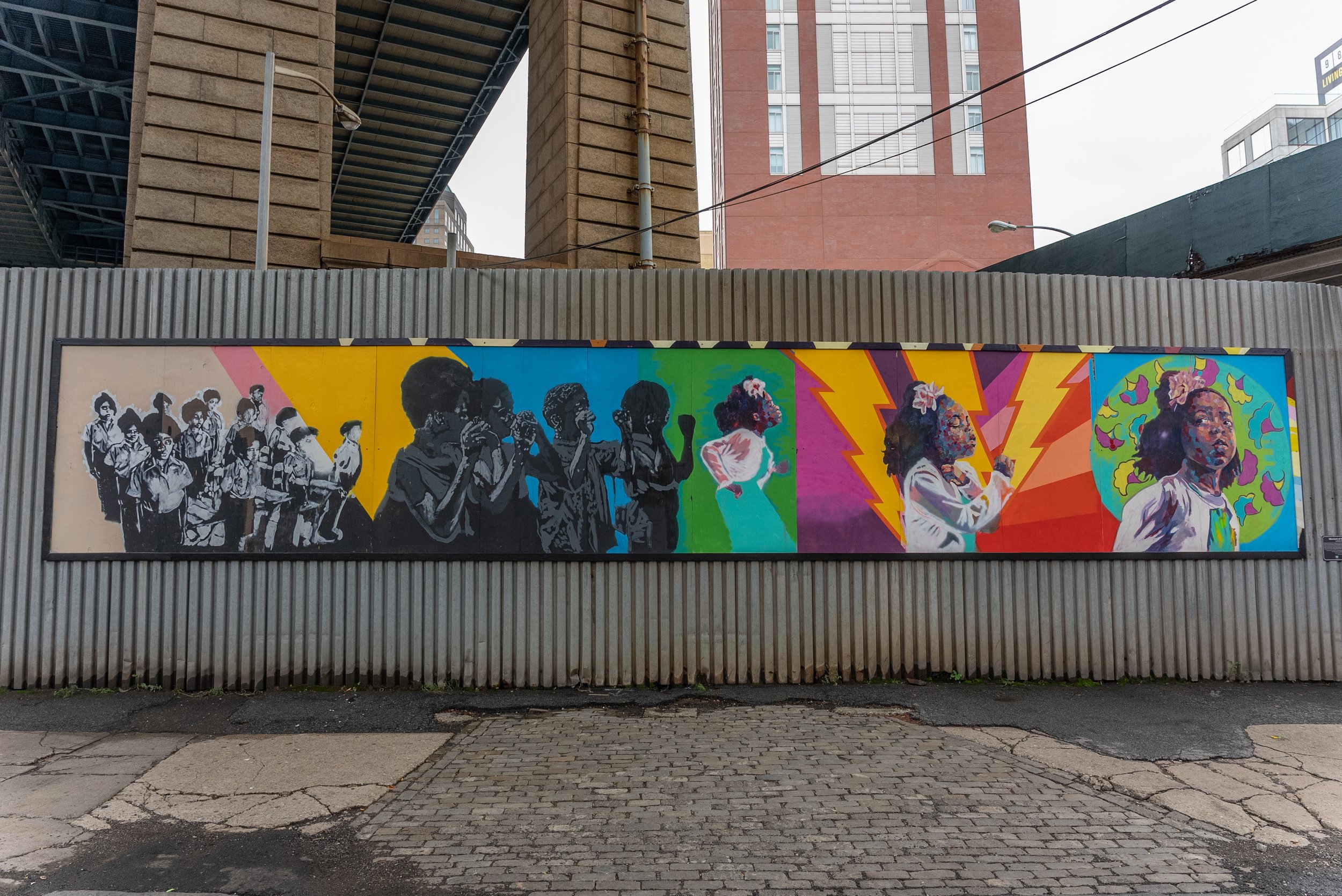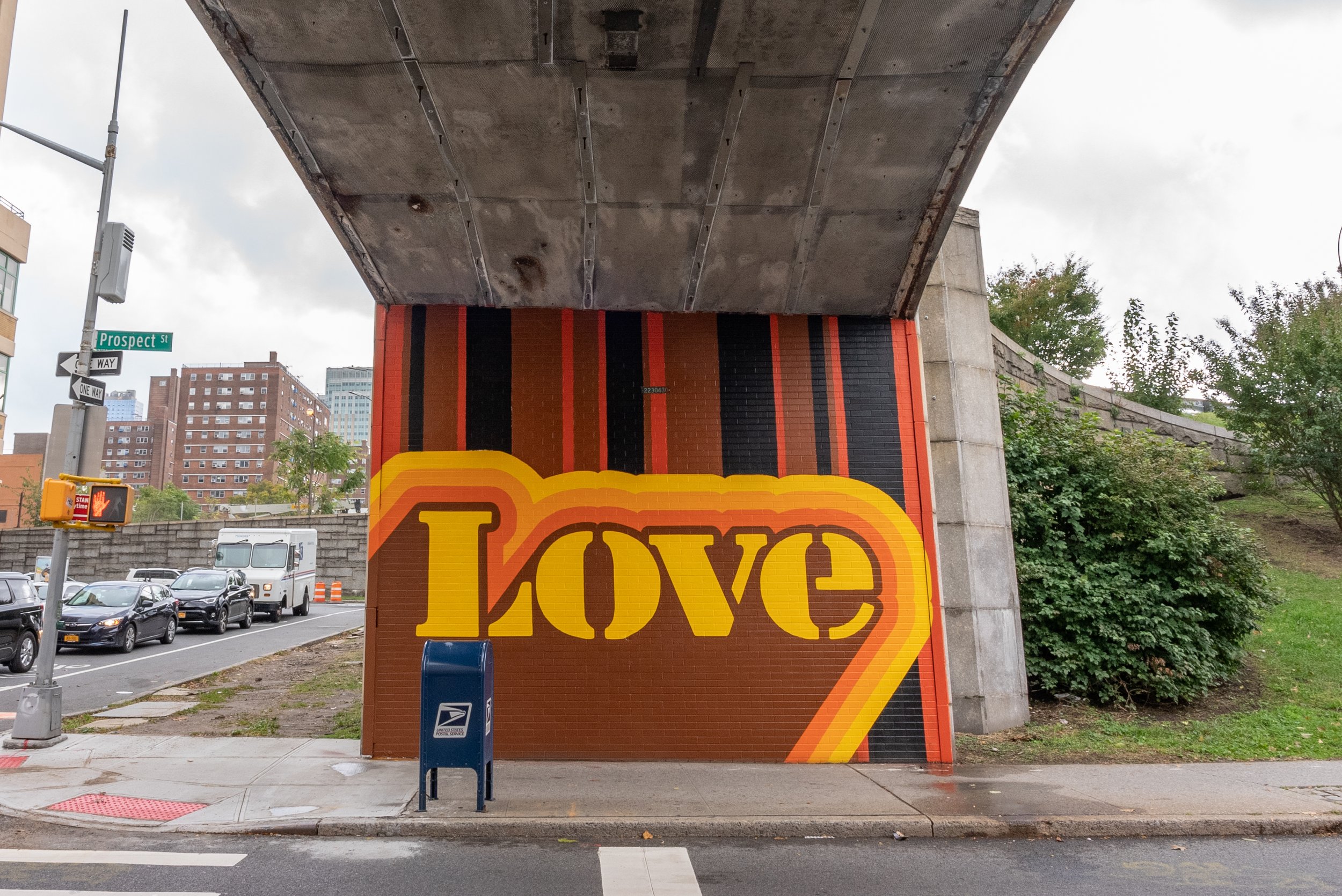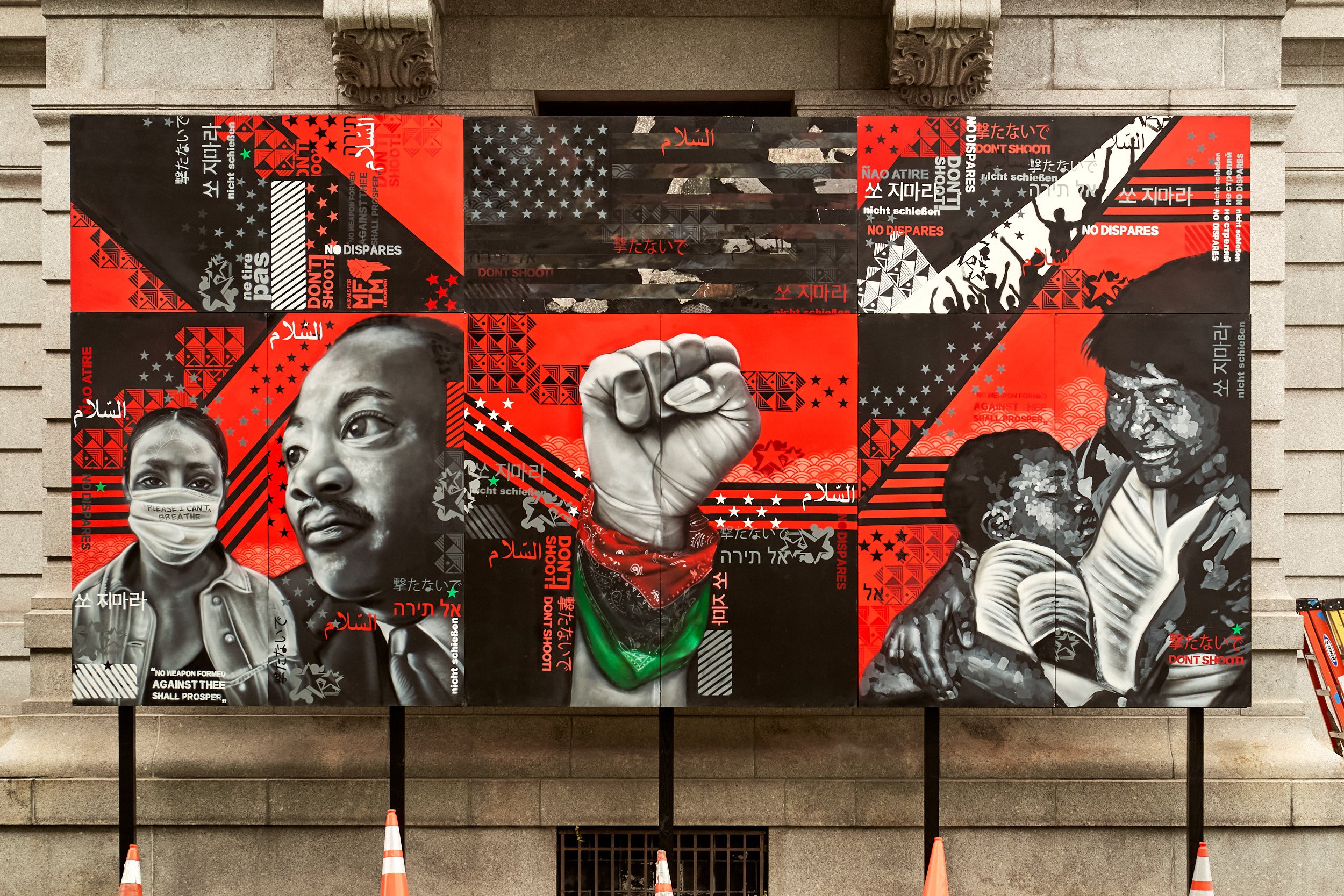
Murals for the Movement
Supporting Black Artists and Artists of Color will be pivotal to the re-imagining of more diverse, multicultural and tolerant cities, neighborhoods and communities.
Murals for the Movement is a public art initiative by Street Theory Gallery intended to rebuild communities across multiple cities with uplifting large-scale murals and public art by Black Artists and Artists of Color. In 2020, the unjust killing of George Floyd, Breonna Taylor, Ahmaud Arbery, and countless others sparked outrage and uprising across the nation. In many of these cities, our murals have served as backdrops during massive protests as reminders of the beauty, hope, and justice that we are all striving for.
This initiative aims to …
Redistribute wealth and resources to bipoc artists
A study by the National Endowment for the Arts found that artists of color generally earn less than their white counterparts. For instance, Black and Hispanic artists typically earn about 75% of what white artists earn.
Beautify cities, communities, and Neighborhoods, with diverse and culturally inspired public art
Art in public spaces profoundly impacts communities and individuals, enhancing community identity and pride.
Public art can stimulate public dialogue, provoke thought, and encourage participation in social and cultural issues, making it a powerful tool for community engagement and expression.
Public art installations can transform mundane or neglected spaces into vibrant areas, encouraging community engagement and revitalization. This impact is not only cultural but can also have economic benefits, but the benefits are typically not reaped by BIPOC communities and rather used for the purpose of gentrification.
enhance and support equity in the art industry
BIPOC artists are underrepresented in major galleries and museums. Research suggests that only a small percentage of works in permanent collections of major U.S. museums are by artists of color. This lack of representation can affect these artists' visibility, recognition, and financial success.
BIPOC artists often have less access to key resources such as funding, networks, and education opportunities. This can be due to systemic barriers, including racial bias and socioeconomic factors.
The art market also reflects this disparity. Works by BIPOC artists are often undervalued in comparison to those by white artists. This affects the perceived value and market demand for their work.

